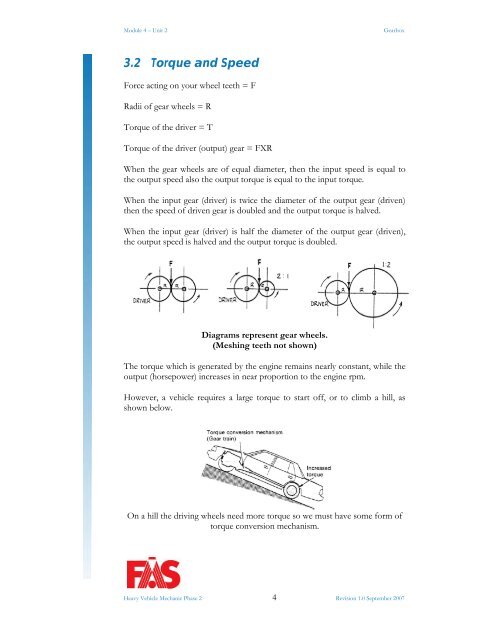TRADE OF HEAVY VEHICLE MECHANIC - eCollege
TRADE OF HEAVY VEHICLE MECHANIC - eCollege
TRADE OF HEAVY VEHICLE MECHANIC - eCollege
Create successful ePaper yourself
Turn your PDF publications into a flip-book with our unique Google optimized e-Paper software.
Module 4 – Unit 2 Gearbox<br />
3.2 Torque and Speed<br />
Force acting on your wheel teeth = F<br />
Radii of gear wheels = R<br />
Torque of the driver = T<br />
Torque of the driver (output) gear = FXR<br />
When the gear wheels are of equal diameter, then the input speed is equal to<br />
the output speed also the output torque is equal to the input torque.<br />
When the input gear (driver) is twice the diameter of the output gear (driven)<br />
then the speed of driven gear is doubled and the output torque is halved.<br />
When the input gear (driver) is half the diameter of the output gear (driven),<br />
the output speed is halved and the output torque is doubled.<br />
Diagrams represent gear wheels.<br />
(Meshing teeth not shown)<br />
The torque which is generated by the engine remains nearly constant, while the<br />
output (horsepower) increases in near proportion to the engine rpm.<br />
However, a vehicle requires a large torque to start off, or to climb a hill, as<br />
shown below.<br />
On a hill the driving wheels need more torque so we must have some form of<br />
torque conversion mechanism.<br />
Heavy Vehicle Mechanic Phase 2 4 Revision 1.0 September 2007
















